biswaIITH
Full Member level 4

Follow along with the video below to see how to install our site as a web app on your home screen.
Note: This feature may not be available in some browsers.



Any signal has 3 components;
Signal Power
Noise Power
Distortion Power
One needs to filter out or measure the spectrum of the fundamental.
Looking at your waveform, there is a lot high frequency repeating glitches (i.e. synchronous noise thus harmonic and some which appear random .
A spectrum analyzer is the best tool to measure.
Another method is a recursive notch filter to remove fundamental and harmonics and leave random noise.
Lookup SINAD measurements which compare total signal ratio to that with fundamental removed, so becomes (s+n+d)/(n+d) in power levels.


yes it does provide FFT...The above current waveform is a cleaned waveform..i am attaching the original waveform that i got from oscilloscope..I presume you already reviewed the definition of THD. At first sight, the shown current waveform has much more non-harmonic noise, e.g. PWM carrier residuals than harmonic distortion. THD is probably below a few percent. In other words, it looks like a good working PFC with insufficient filter for PWM frequency.
You are asking how to calculate THD but you actually need to measure something before calculating THD. That's primarly a question of available instruments rather than software tools. Did you check the math features of your oscilloscope? Does it provide FFT? Waveform export?
Notch filter is a classical method to measure THD, but in the present case it would measure THD+noise instead of THD.
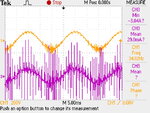 ....measuring THD of this waveform is not going to give true measure...i have exported the data of the actual waveform from cro(attached in this post) into an excel sheet ..But that data also contains the unnecessary noise and spikes....
....measuring THD of this waveform is not going to give true measure...i have exported the data of the actual waveform from cro(attached in this post) into an excel sheet ..But that data also contains the unnecessary noise and spikes....



No i am using Tektronix TDS2012 oscilloscope..can we do power analysis ??


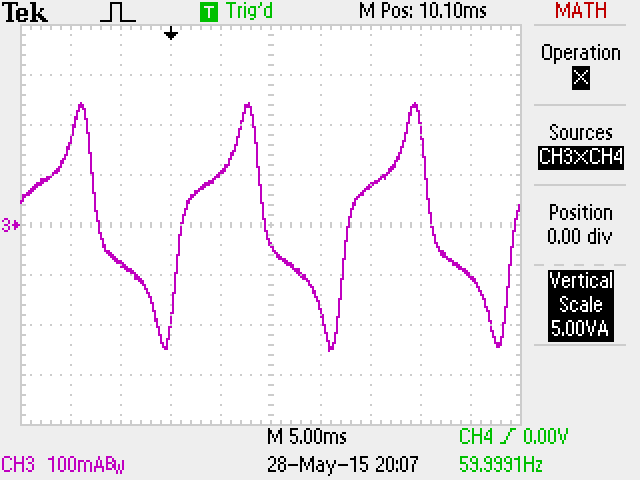
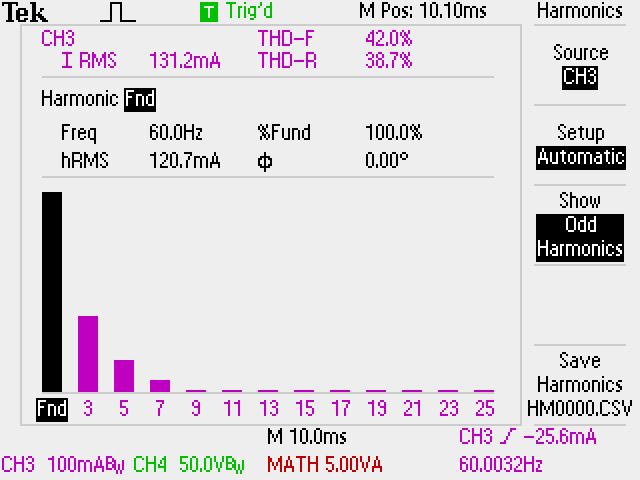
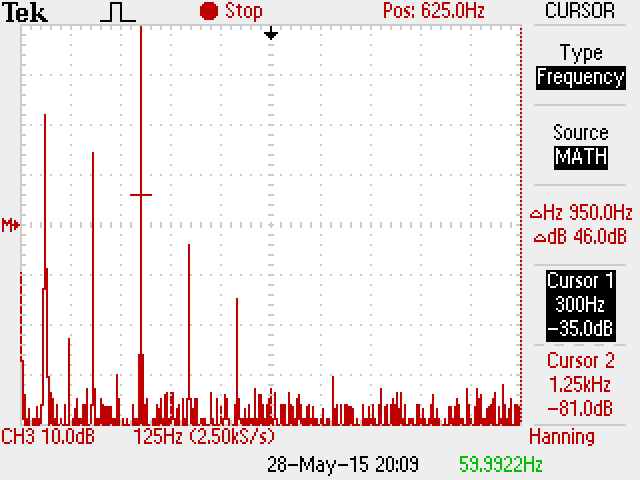

Yes, but the post #1 /post #5 current waveforms have (guessed) not more than 1 or 2 % THD. Exact measurement with built-in FFT may be difficult (and a purely academic job, because PFC operation is obviously perfect).I think you might be able to use the FFT function of the scope.

Yes, but the post #1 /post #5 current waveforms have (guessed) not more than 1 or 2 % THD. Exact measurement with built-in FFT may be difficult (and a purely academic job, because PFC operation is obviously perfect).



actually,while saving the waveform ,i saved all the data in an excelsheet...following are the values i got
fundamental(50)= -12.2dB
3rd harmonic(150)=-32.6dB
5th harmonic(250)=-45.4dB
7th harmonic(350)=-38.9dB
9th harmonic(450)=-39.4dB

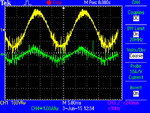 ...Though all the operating conditions are same(i.e. load,line,switching frequency)...Why is there a difference between the earlier waveforms(post 1 and post 5) and the current one???i am confused:thinker:..
...Though all the operating conditions are same(i.e. load,line,switching frequency)...Why is there a difference between the earlier waveforms(post 1 and post 5) and the current one???i am confused:thinker:..